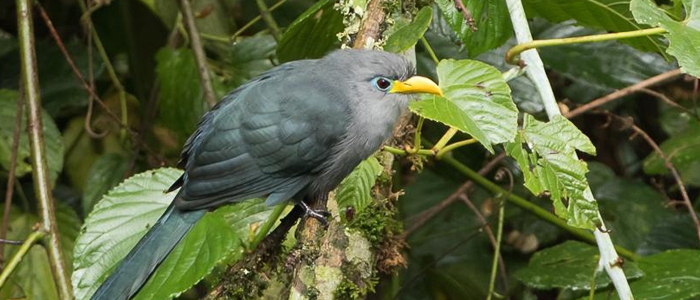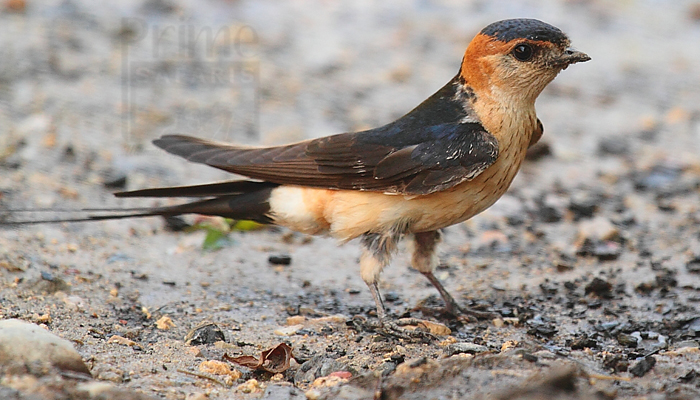

What to Know About the Red-rumped Swallow in Uganda?
The Red-Rumped Swallow in Uganda is one of the Uganda Birds seen during Birding watching in Uganda. It is placed in the subfamily Hirundininae that includes the typical elegant swallows and martins.
The species of genus Cecropis show large amounts of rufous in their plumage, especially on head, neck and rump, and some species have streaked underparts.
The tail is usually deeply forked. The Red-rumped Swallow is the most widespread of this genus. It breeds across S Europe and Asia, to S Siberia and Japan.
It is migratory and winters in sub-Saharan Africa particularly. Some populations are year-round resident in Africa.
The Red-rumped Swallow is generally common throughout its wide range, except in W and E Africa where it is locally common.
The species is not globally threatened. And weight between 19-29g with length from 16-17cm.
How Does the Red-rumped Swallow in Uganda Look Like?
The Red-rumped Swallow adult is very similar to the Barn Swallow with orange-rufous neck sides and rump.
The buffy underparts show long, dark streaks. The underwing-coverts are creamy-buff, while the under tail-coverts are black. On the upperparts, crown and back are glossy deep blue.
They are separated by partial chestnut collar. The rump is chestnut to orange-rufous, finely streaked black.
Upper wing and upper tail are blackish and slightly glossy. The outer rectrices are elongated, up to 3,5 cm.
The blackish bill is short and flat with wide gape. The eyes are dark brown. The short legs and the small, weak feet are blackish.
The female has similar plumage but she has shorter tail than male. The juvenile is duller with browner upperparts, paler rufous areas and more indistinct streaking. The tail is shorter and the wing feathers are tipped buff.
How Does the Red-rumped Swallow in Uganda Sing and Make Calls?
The Red-rumped Swallow gives House-sparrow-like chirp “tchreet” as contact call, and a nasal “tzueeee”. The alarm call is a sharp “kiir”.
The song resembles that of Barn Swallow but with lower-pitched twittering, mostly harsher, slower, shorter and more nasal.
How Does the Red-rumped Swallow in Uganda Feed?
The Red-rumped Swallow feeds almost entirely on flying insects all year round. The diet includes a wide variety of species caught by aerial pursuit, sometimes up to 100metres or more.
The prey items vary locally and depend on the season, including dipteran, coleopteran, hemipteran, isopteran, orthopteran and hymenopteran.
The Red-rumped Swallow forages alone, in pairs or in small groups. While hunting, the flight includes steady gliding and relatively rapid wingbeats.
It also picks up insects while perched in vegetation or even on the ground.
How Does the Red-rumped Swallow in Uganda Nest?
Both adults build the nest and collect mud as a pellet in the bill, usually close to the nest site. The flask-shaped nest has a tubular entrance.
It is placed on rocky ledges, buildings, under bridges and caves. It is cemented to the horizontal surface from below.
There is a lining of soft grass and feathers inside the nest. They need 5/15 days to build this peculiar structure placed between 5 and 20metres above the ground.
How Does the Red-rumped Swallow in Uganda Breed?
The breeding season varies according to the range, but it takes place generally between March and September.
The Red-rumped Swallow breeds solitary or in loose groups of less than 50 pairs, often in clustered groups or dispersed.
The pairs are often aggressive against each other, and the nest entrances are usually at least 30 cm apart, or up to 2-3metres.
How Does the Red-rumped Swallow in Uganda Reproduce?
The female lays 2-7 eggs (usually 4-5), but only 2-3 in Africa. Both adults incubate during about two weeks, and the chicks are fed by both parents.
The young fledge 26-27 days after hatching, but they still depend on parents for food for 5-6 days. They roost in the nest for 2-3 weeks after fledging.
This species produces usually two broods per season. Some adults have been recorded making as many as 138 food deliveries per day and the chicks are fed on various insects.
More posts for you

Over 50 excellent reviews on Safaribookings.








